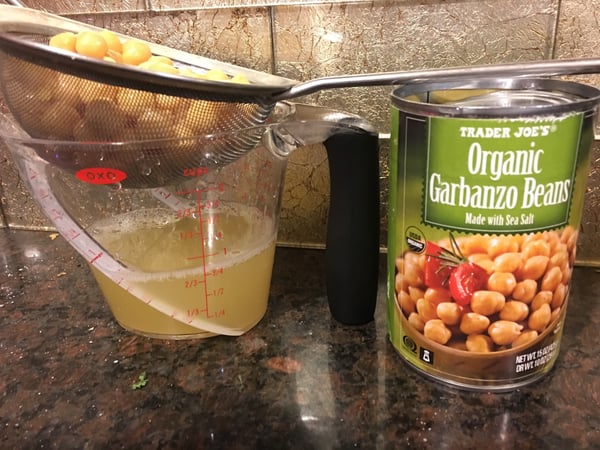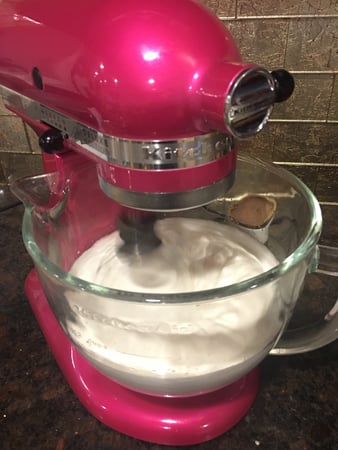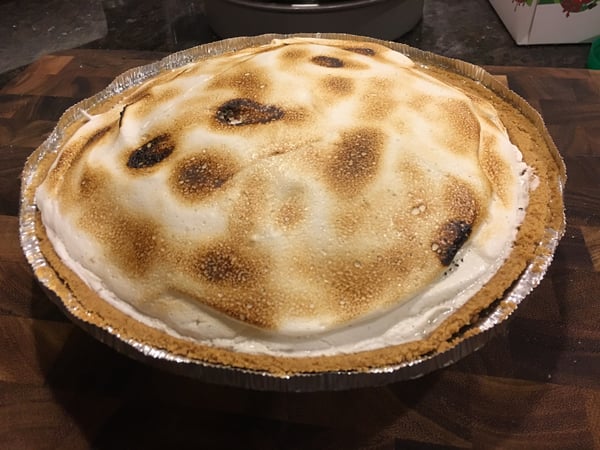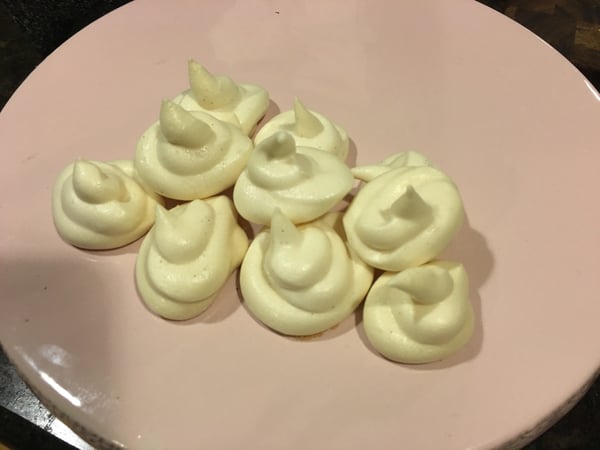Depending on their usage, common egg substitutes have been tofu, cornstarch, potato starch, tapioca, applesauce, bananas, chickpea flour, ground flaxseed, and various commercial egg replacements. Substituting a whole egg is easy. But an egg white substitute? That’s been the vegan world’s Loch Ness Monster! It’s been THAT hard to find.
Macarons, meringues, nugat, pavlova; these are all things that many vegans and those with egg allergies have had to miss out on until now.
We can now have those light and fluffy desserts, thanks to Aquafaba!
Aquafaba is not a brand name product. It’s actually something that has been in our pantries for years and we just didn’t know it. It is a latin term that loosely means bean liquid, and it is actually the liquid in a can of chickpeas. Yeah, the stuff you strain and dump down the drain when you’re about to make hummus. THAT stuff is what makes all of those yummy desserts. And it whips almost exactly like egg whites.
 The best way to whip them is to use a mixer, and whip it on high speed for 10-15 minutes. If you do not have a stand mixer, a hand mixer will work, but you don’t want to mix this by hand. Just like egg whites, a little cream of tartar can help to stabilize, especially when making a meringue. As seen in this picture, the aquafaba will greatly multiply in volume, and become that beautiful cloud white color.
The best way to whip them is to use a mixer, and whip it on high speed for 10-15 minutes. If you do not have a stand mixer, a hand mixer will work, but you don’t want to mix this by hand. Just like egg whites, a little cream of tartar can help to stabilize, especially when making a meringue. As seen in this picture, the aquafaba will greatly multiply in volume, and become that beautiful cloud white color.
 Here is my recipe for vegan meringue that I use for both meringue cookies and meringue pies.
Here is my recipe for vegan meringue that I use for both meringue cookies and meringue pies.
Vegan Meringue
1 can of aquafaba (most cans will yield about ¾ cup, which is about 4 egg whites)
¼ tsp cream of tartar
1 cup powdered sugar
1 tsp vanilla bean paste
1. Preheat oven to 250 degrees F (same temperature for pies and cookies).
2. In your mixer with the balloon whisk attachment, whip together your aquafaba and cream of tartar, and whip on the highest speed until stiff peaks form, about 10-15 minutes. Add half of the powdered sugar, and whip until combined. Add the remaining powdered sugar and vanilla bean paste, and whip until combined.
3. If you are going to use it for a pie, dollop the meringue onto the chilled pie, and place in the oven for 30 minutes, or until the top of the meringue is glossy and shiny.
It also brulees beautifully, even if I got a couple dark spots here. You can either take a torch to it, or pop it in the broiler for 2 minutes.

If you are looking to make meringue cookies, spoon dollops of your meringue, or use a piping bag, onto a parchment lined baking sheet, and place in your oven for 90 minutes, or until dried. Let cool to room temperature before serving.
 Here are a couple of extra tips when it comes to aquafaba:
Here are a couple of extra tips when it comes to aquafaba:
- When purchasing chickpeas to make aquafaba, be sure to buy ones that say “no salt added,” or when reading the nutrition facts on the back, I like to make sure the sodium daily value percentage is at 8% or less. Once whipped and increased in volume, that salt flavor disappears. Regular chickpeas, however, will produce that strong chickpea flavor that can be overpowering.
- Just like egg whites, ALL bowls and beaters should be extra clean with no oil, in order to ensure they will rise properly.
- When it comes to vegan macarons, every recipe I’ve come across has called for the aquafaba to be reduced to ⅓-½ its original volume. I will admit that I am unsure why this is, but my guess is that it’s similar to aging egg whites, a technique that macaron chefs use to get the unique texture. These make very delicious vegan macarons. (That being said, aquafaba, when exposed to heat, won’t scramble. So if you’re looking to make a vegan egg white omelet, you won’t have any luck.)
- You can make aquafaba by cooking your own chickpeas, but I will admit I have not tried this yet. I’m usually too impatient, and just want a convenient can.
Now that you know the tips to making vegan egg white-style desserts, there’s only one thing left to do… figure out what to do with all those extra chickpeas!
You can learn more about vegan egg and dairy substitutions at The Chopping Block's Vegan Brunch cooking class coming up in February at Lincoln Square.












